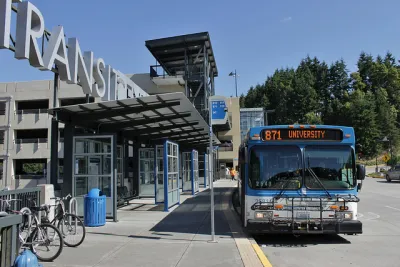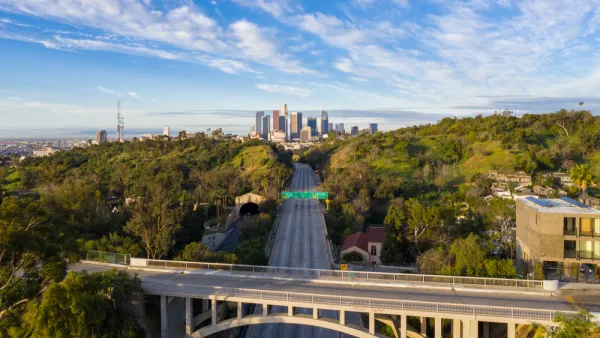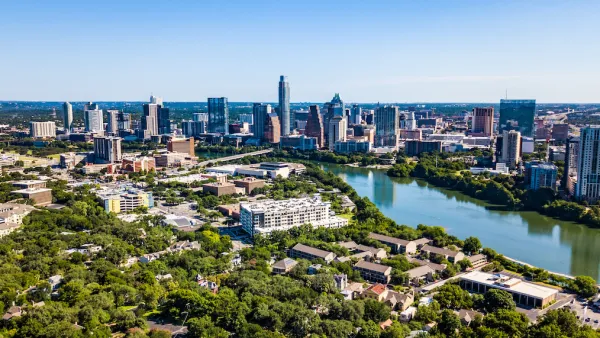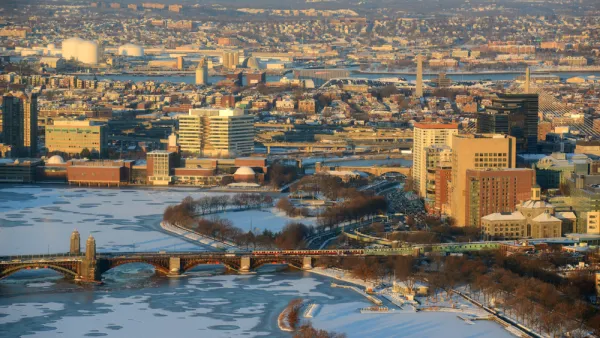The new "Solving the Climate Crisis" report could provide guidance and direction if federal leadership in Washington, D.C. finally decides to take aggressive steps to reduce carbon emissions and adapt to a changed climate.

The House Select Committee on the Climate Crisis released a new "Solving the Climate Crisis" report this week, calling specific attention to the ability of local planners to work for climate solutions, according to an article by APA Policy Director Jason Jordan.
"Over its more than 500 pages 'Solving the Climate Crisis' outlines big goals, economy-wide net zero carbon emissions by 2050, big aspirations, a new national commitment to a 'moonshot' approach to climate change, and granular policy detail covering a wide range of topics," according to Jordan.
"The recommendations are built around 12 'key pillars' with detailed legislative suggestions in each area. The pillars cover infrastructure, clean energy, zero-emission technology, workforce issues, environmental justice, public health, agriculture, resiliency, natural resources, national security and international leadership, and core institutions."
While the report has virtually nop hope of becoming law, according to Jordan, the report could influence climate legislation under a new administration in the Executive Branch or new leadership in Congress. The report also lays out specific steps for local planners to lead on climate action, and calls for a stronger federal role in supporting the work of planning on issues like "building codes, setting resiliency standards, overhauling flood mapping, providing better data to communities, funding mitigation, and bolstering local community engagement," according to Jordan. The call for a stronger role for planning expertise echoes similar sentiments in a recent article about the role of the planning profession during the pandemic.
FULL STORY: Congress Looks to Planning as a Climate Crisis Solution

National Parks Layoffs Will Cause Communities to Lose Billions
Thousands of essential park workers were laid off this week, just before the busy spring break season.

Retro-silient?: America’s First “Eco-burb,” The Woodlands Turns 50
A master-planned community north of Houston offers lessons on green infrastructure and resilient design, but falls short of its founder’s lofty affordability and walkability goals.

Delivering for America Plan Will Downgrade Mail Service in at Least 49.5 Percent of Zip Codes
Republican and Democrat lawmakers criticize the plan for its disproportionate negative impact on rural communities.

Test News Post 1
This is a summary

Test News Headline 46
Test for the image on the front page.

Balancing Bombs and Butterflies: How the National Guard Protects a Rare Species
The National Guard at Fort Indiantown Gap uses GIS technology and land management strategies to balance military training with conservation efforts, ensuring the survival of the rare eastern regal fritillary butterfly.
Urban Design for Planners 1: Software Tools
This six-course series explores essential urban design concepts using open source software and equips planners with the tools they need to participate fully in the urban design process.
Planning for Universal Design
Learn the tools for implementing Universal Design in planning regulations.
EMC Planning Group, Inc.
Planetizen
Planetizen
Mpact (formerly Rail~Volution)
Great Falls Development Authority, Inc.
HUDs Office of Policy Development and Research
NYU Wagner Graduate School of Public Service





























